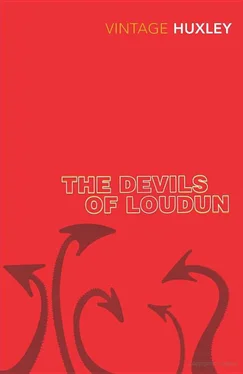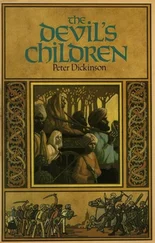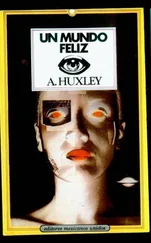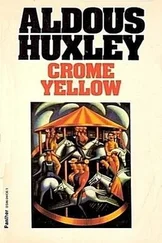(In some districts the members of the Dianic cult and their fellow travellers may actually have constituted a majority of the population. Rémy, Boguet and de Lancre have left accounts respectively of Lorraine, the Jura and the Basque country, as they found them at the turn of the seventeenth century. From their books it is clear that in these outlying regions most people were, to some extent at least, of the old religion. Hedging their bets, they worshipped God by day and the devil at night. Among the Basques many priests used to celebrate both kinds of Mass, the black as well as the white. Lancre burned three of these eccentric clergymen, lost five who escaped from the condemned cell, and vehemently suspected a host of others.)
The central ceremony of Ritual Witchcraft was the so-called ‘Sabbath’—a word of unknown origin, having no relation to its Hebrew homonym. Sabbaths were celebrated four times a year—on Candlemas Day, 2nd February; on Rood Mass Day, 1st May; on Lammas Day, 1st August; and on the eve of All Hallows, 31st October. These were great festivals, often attended by hundreds of devotees, who came from considerable distances. Between Sabbaths there were weekly ‘Esbats’ for small congregations in the villages where the ancient religion was still practised. At all high Sabbaths the devil himself was invariably present, in the person of some man who had inherited, or otherwise acquired, the honour of being the incarnation of the two-faced god of the Dianic cult. The worshippers paid homage to the god by kissing his reverse face—a mask worn, beneath an animal’s tail, on the devil’s backside. There was then, for some at least of the female devotees, a ritual copulation with the god, who was equipped for this purpose with an artificial phallus of horn or metal. This ceremony was followed by a picnic (for the Sabbaths were celebrated out of doors, near sacred trees or stones), by dancing and finally by a promiscuous sexual orgy that had, no doubt, originally been a magical operation for increasing the fertility of the animals on which primitive hunters and herdsmen depend for their livelihood. The prevailing atmosphere at the Sabbaths was one of good fellowship and mindless, animal joy. When captured and brought to trial, many of those who had taken part in the Sabbath resolutely refused, even under torture, even at the stake, to abjure the religion which had brought them so much happiness.
In the eyes of the Church and of the civil magistrates membership in the Devil’s Party was an aggravation of the crime of witchcraft. A witch who had attended the Sabbath was worse than a witch who had strictly confined herself to private practice. To attend the Sabbath was to profess openly that one preferred the Dianic Cult to Christianity. Moreover, the witches’ organization was a secret society which might be used by ambitious leaders for political purposes. That Bothwell had thus made use of the Scottish covens seems almost certain. Still more certain is the fact that Elizabeth and her Privy Council were convinced, rightly or wrongly, that foreign and native Catholics were employing witches and magicians to take the Queen’s life. In France, according to Bodin, the sorcerers constituted a kind of Mafia, with members in every class of society and branches in every town and village.
That his crime might seem more abominable, Grandier was accused at his trial not merely of operative witchcraft, but also of participation in the rites of the Sabbath, of membership in the diabolic church.
The spectacle thus evoked of a pupil of the Jesuits solemnly renouncing his baptism, of a priest hurrying from the altar to do homage to the devil, of a grave and learned ecclesiastic dancing jigs with conjurers and tumbling in the hay with an assortment of witches, goats and incubi, was one well calculated to appal the pious, to tickle the groundlings and to bring joy to the Protestants.
DE CERISAY’S preliminary investigations had left him convinced that there was no genuine possession—only a sickness, improved by some little fraud on the part of the nuns, by a great deal of malice on the part of Canon Mignon and by the superstition, fanaticism and professional self-interest of the other ecclesiastics involved in the affair. There could be no cure, it was obvious, until the exorcisms had been stopped. But when he tried to put an end to these suggestions which were systematically driving the nuns out of their wits, Mignon and Barré triumphantly produced a written order from the Bishop, charging them to go on exorcizing the Ursulines until further notice. Unwilling to risk a scandal, de Cerisay gave his permission for the exorcisms to continue, but insisted on being present during the performance. On one of these occasions, it is recorded, there was a terrifying noise in the chimney and a cat suddenly appeared in the fireplace. The animal was pursued, caught, sprinkled with holy water, signed with the cross and adjured in Latin to depart. After which it was discovered that this devil in disguise was the nuns’ pet Tom, who had been out on the tiles and was taking a short cut home. The laughter was loud and Rabelaisian.
Next day Mignon and Barré had the impudence to shut the convent door in de Cerisay’s face. With his fellow magistrates he was kept waiting outside in the autumnal weather, while, contrary to his orders, the two priests exorcized their victims without official witnesses. Returning to his chambers, the indignant judge dictated a letter to the exorcists. Their actions, he declared, were such as to create “a vehement suspicion of trickery and suggestion.” Moreover, “the Superior of the convent having publicly accused and defamed Grandier, by saying that he had a compact with the devils, nothing thereafter should have been done in secret; on the contrary, everything must now be done in the face of justice and in our presence.” Alarmed by so much firmness, the exorcists apologized and reported that the nuns had calmed down and that consequently further exorcisms would, for the time being, be unnecessary.
Meanwhile Grandier had ridden to Poitiers to appeal to the Bishop. But when he called, M. de la Rochepozay was indisposed and could only send a message by his chaplain to the effect that “M. Grandier should sue before the royal judges and that he, the Bishop, would be most happy if he could obtain justice in this affair.”
The parson returned to Loudun and at once applied to the Bailli for a restraining order against Mignon and his accomplices. De Cerisay promptly issued an injunction forbidding anyone, of whatever rank or quality, to harm or traduce the said Curé of Saint-Pierre. At the same time he expressly ordered Mignon to do no more exorcizing. The Canon retorted that he was answerable only to his ecclesiastical superiors and that he did not recognize the Bailli ’s authority in a matter which, since it involved the devil, was wholly spiritual.
In the interval Barré had returned to his parishioners at Chinon. There were no more public exorcisms. But every day Canon Mignon spent long hours with his penitents, reading them chapters from Father Michaelis’s best-selling report of the Gauffridy case, assuring them that Grandier was as great a magician as his Provençal colleague and that they too had been bewitched. By this time the behaviour of the good sisters had become so eccentric that the parents of their pupils took fright; soon the boarders were all withdrawn and such few day-pupils as still ventured into the convent brought back the most disquieting reports. Halfway through their arithmetic lesson, Sister Claire of St. John had started to laugh uncontrollably, as though someone were tickling her. In the refectory Sister Martha had had a fight with Sister Louise of Jesus. What screaming! And the bad language!
Читать дальше











